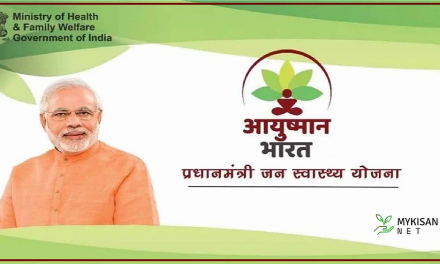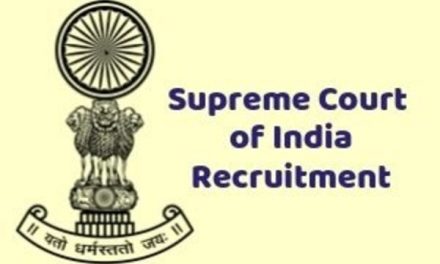The Central Board of Direct Taxation (CBDT) has notified new income tax return forms — ITR-1 to ITR-7 — for the assessment year 2021-22, the ministry of finance said in a release on 1 April. “Keeping in view the ongoing COVID-19 crisis and to facilitate the taxpayers, no significant change have been made to the ITR forms in comparison to the last year’s ITR forms,” the CBDT said. Only the bare minimum changes necessitated due to amendments in the Income-tax Act, 1961 have been made, CBDT further added.
How will that affect the common taxpayer?
Can I pick up any ITR form right away and start filling it?
Not quite. Although the government has notified all ITR forms, you still need to download them and fill in the details. This facility is called ‘Utilities’. At present, the CBDT has allowed the ‘Utilities’ facilities only for ITR-1 and ITR-4.
Here, you download the applicable editable income tax form (utility), save it on your computer, fill it and then upload it on the income tax website. While earlier the utility forms were either in excel or java format, this year the CBDT has enabled ITR 1 and ITR 4 utilities based on new technology JSON (JavaScript Object Notation).
Utilities for other ITRs will be added in the subsequent releases. Besides that a step-by-step guide has been issued, giving instructions about how to install and use it. These forms that you download come pre-filled to a large degree as the taxman already captures a lot of your investment and spending related information. But the form also allows you to fill in a lot of your income details, yourself.
Changes in line with new tax regime
Though the new ITR forms notified aren’t much different to last year’s forms, this year marks the first time that individual taxpayers will have to choose between existing and new income tax regimes while filing their taxes, under Section 115BAC of the Income Tax Act, 1961. The new income tax regime- that carried lower income tax rates provided the taxpayer would let go of a host of income tax deductions and rebates- was introduced in Budget 2020.
Taxpayers not opting for the new tax regime will be entitled to various exemptions but they will have to pay tax at comparatively higher rates.
Sahaj (ITR-1) and Sugam (ITR-4) explained
Consequent to the Finance Act, 2020, the CBDT has imposed some restrictions on filing of the ITR-1 (Sahaj) and ITR-4 (Sugam), which are simpler forms and filed by the bulk of small and medium taxpayers.
The ITR-1, which is Sahaj, is required to be filed by an individual having income up to Rs 50 lakh and who receives income from salary, one house property or other source mainly interest. Sugam (ITR-4) is filed by individuals, Hindu Undivided Families (HUFs) and firms having total income up to Rs 50 lakh and income from business and profession computed under the provisions relating to presumptive taxation.
Who cannot use ITR-1 and ITR-4?
Explaining the restrictive provisions, Naveen Wadhwa, DGM, Taxmann, says that “ITR-1 shall not be available to a taxpayer in whose case the tax has been deducted on cash withdrawal under Section 194N. Further, return filing is also not allowed in ITR-1 or ITR-4 if the tax has been deferred in respect of ESOPs allotted by an eligible start-up.”
Under section 194N of the IT Act, tax is required to be deducted if the amount of cash withdrawn during the year exceeds Rs 20 lakh in case of certain non-filers of return and Rs 1 crore in other cases from any bank, banking institution, cooperative bank or post office.
Further, if payment or deduction of tax in respect of such ESOPs has been deferred, under Rule 12, then you cannot use either ITR-1 or ITR-4. For this, you will have to either ITR-2 or ITR-3; the utilities for these forms are yet to be made available.
Neha Malhotra, Director, Nangia Andersen LLP, said that keeping in view the ongoing crisis due to the pandemic and to facilitate the taxpayers, the government stated that no significant changes have been made to the new ITR forms in comparison to the last year’s forms. Only ‘bare minimum changes necessitated due to the amendments in the Income Tax Act have been made’.
“The most significant change in the ITR forms is the enabling of the option to choose the alternative tax regime that was made applicable vide Finance Act 2020. The alternative tax regime offers 6 slabs with low tax rates, if taxpayers forego a set of exemptions and deductions available under income tax laws,” she said.
Part A (General) of the new ITR Forms 1 and 2 require the assessee to disclose whether the alternative tax regime is being opted for or not.
Malhotra also informed that ITR 1 cannot be filed by an individual in whose case tax has been deducted at source under section 194N of the Income Tax Act, which necessitates every bank/post office/ cooperative bank to withhold tax in case cash withdrawal by an individual, from one or more of his accounts, during the financial year exceeds Rs 1 crore (Rs 20 lakh in case of non-filers of return for three previous years).
So far, utilities for only ITR-1 and ITR-4, the most sought-after tax return forms, have been notified. Utilities for other ITR forms are expected to be notified soon. Watch this space.
To make it further simpler for the return filers, the income tax department has notified that the subsequent releases will have a questionnaire-based functionality that will help taxpayers identify which ITR is applicable to them. Further, it shall enable the taxpayers to pay taxes, verify and upload the ITR through the utility itself.
“The new utility is a user-friendly functionality for filing of returns and will afford greater ease to the taxpayers. The utility itself provides help in the form of FAQs, guidance notes, circulars and provisions of the law so as to enable hassle-free return filing,” Malhotra pointed out.












